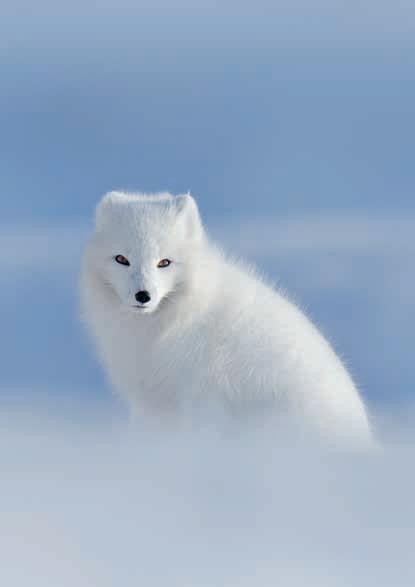
3 minute read
The Arctic
Home to some of the most spectacular landscapes and charismatic wildlife on the planet, the Arctic is a bucket-list destination for many people. It’s a harsh environment, where even during the summer, temperatures rarely rise more than a few degrees above freezing. At this time of year, there’s still a great deal of broken sea ice in the fjords and permanent glaciers inland. On the coast however the relative warmth has opened up a snow-free tundra habitat where mosses and a few hardy wildflowers grow.
Wildlife Calendar
TheArcticCircle
Polar bears Cetaceans Pinnipeds Birdlife
May Polar bears on packice along the northern coast of Spitsbergen.
Jun Polar bears make landfall, particularly on Spitsbergen.
Jul Sea ice retreats, polar bears become isolated on land across the High Arctic.
Aug Polar bear sightings are less frequent as summer ends with lower prey density.
Where to go
Our Arctic voyages mainly visit the Norwegian archipelago of Svalbard, centring on the biggest island, Spitsbergen. This is a land of incredibly beautiful indented fjords, glaciers and icebergs. For people based in the UK or Europe, it’s relatively quick to reach the departure port of Longyearbyen. One trip also runs to Greenland, the world’s largest island, where you’ll find equally jaw-dropping scenery but a different suite of terrestrial wildlife and a rich indigenous culture.
Wildlife
The most sought-after Arctic species are usually found in or near the water. These include polar bears, which are as at home in the sea as they're on land, though ice is of greatest importance to them because it’s here that they hunt seals, their most significant prey. Don’t be surprised to see them swimming however as they have incredible stamina and can travel huge distances this way.
During the Arctic summer, the opportunities for predation on ice are limited, and many wander Svalbard’s shores looking for dead whales or reindeer to eat as carrion. Some individuals have learned to raid nesting bird colonies for eggs or chicks.
You may see walruses hauled out on the shore, and ringed and bearded seals on ice floes. Cetacean sightings could include humpback whales, belugas and narwhals, with a possibility of the only whale endemic to the Arctic, the bowhead, in the waters off Greenland.
Cetaceans in the waters of the High Arctic after annual migration.
More cetaceans arrive from the south, increasing frequency of sightings.
Cetacean numbers peak across the Arctic, both in abundance and variety.
Cetaceans continue to feed, but some begin migration south.
Inland, you have an excellent chance of encountering reindeer and Arctic foxes. The latter must use the short summer months to bring up litters of eight or more pups, frequently by raiding accessible bird colonies. On Greenland, you may come across musk ox and Arctic hares, species not found on Svalbard.
Summer birdlife is abundant, with little auks, black guillemots and razorbills easily seen, along with kittiwakes, skuas and terns. Pinkfooted and barnacle geese breed on the archipelago, and eider ducks are common.
What to Expect
We offer a wide range of polar vessels including purpose-built and converted research boats. From the moment you step aboard, there’s an extensive programme of excursions, lectures and other activities such as photography or cultural workshops to keep you fully occupied. In your spare time head out on deck – after all, you never know when a polar bear may hove into view.
Meals are served three times a day, with a full range of food including plenty of fresh fruit and vegetables, and tea, coffee and biscuits available throughout the day.
Pinnipeds, especially walrus around the west coast of Spitsbergen.
Pinnipeds, including harp and bearded seals give birth.
Walrus haul out on the beaches, seals are attracted to the ice-floes.
Sea ice retreats, pinnipeds are less frequently found as they follow the ice.
The Arctic’s birdlife begins to arrive in preparation for the short breeding season.
Huge numbers of seabirds - little auks, guillemots and puffins start to breed.
Peak of breeding season. Fledglings leave the nest, attracting predators like Arctic fox.
Last fledglings leave the nest, and some species begin to migrate south.
When to go
We only run trips to Spitsbergen during the summer months of May to August, when the seas surrounding the island, and the rest of Svalbard, are sufficiently ice-free to allow us to access fjords and reach the best locations to ensure you make the most of your Arctic adventure.










